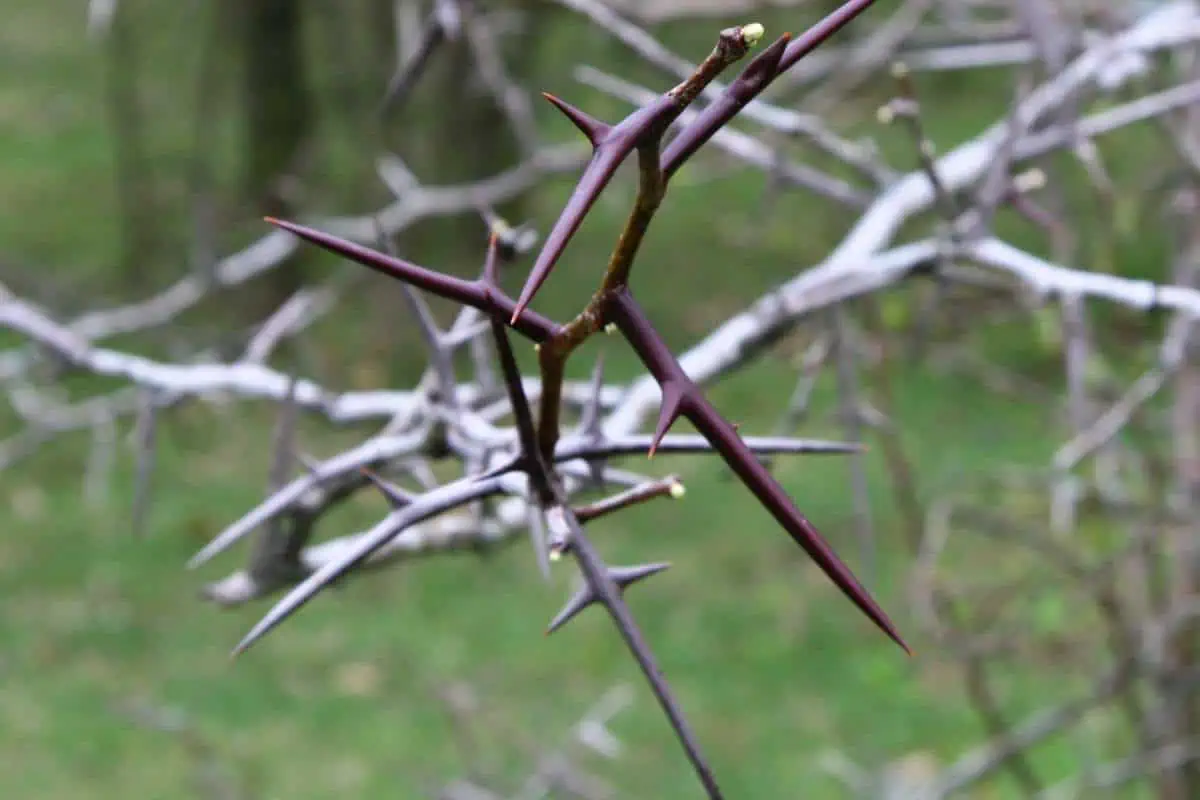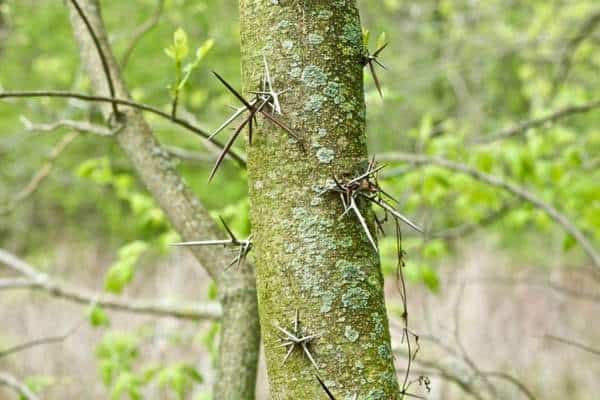Trees with thorns in Ohio exhibit unique adaptations to their environment, providing an opportunity to explore and understand the diverse plant life in the region. Many plants have evolved specific traits to survive and thrive, such as flowers shaped to accommodate hummingbirds or trees producing colorful fruit to attract birds. Among these, some trees in Ohio have developed spikes along their branches and trunks, a characteristic that may initially seem unusual given the state’s temperate climate.
The presence of these spikes raises questions about the factors that influenced their development. To understand this phenomenon, it is essential to consider the evolutionary history of these trees. Thousands of years ago, the American mastodon, a relative of the elephant, inhabited North America.
This large herbivore consumed woody plants and shrubs, posing a significant threat to trees. The development of thorns on some trees in Ohio can be traced back to this period, as these spikes served as a defense mechanism against the mastodon’s voracious appetite.
4 Trees with Thorns in Ohio
To defend themselves against such attacks from mastodons, some of the trees in Ohio grew thick thorns along the lower portions of their trunks. Keep reading to learn about four trees with thorns that are common in this state!
1. Honeylocust
- Scientific name: Gleditsia triacanthos
- Height range: 80 feet tall
Honeylocust trees are native to the east-central United States. They thrive along the lowlands of the Mississippi River Valley. Ohio is at the northeastern limit of their range. They serve several ecological functions because of their versatility and seed production.
First, honeylocust trees are great at preventing erosion. They prefer moist environments like river bottoms and floodplains. Here, they root in and anchor the soil, preventing topsoil from being washed away.
Second, they are prolific at spreading their seeds. They drop seed pods every year. These pods are a substantial food source for squirrels, rabbits, and small mammals.
The pods also contain edible pulp. This is how the tree got its name – the pulp tastes sweet like honey. Historically, settlers valued the wood of the honeylocust tree because of its high durability.
It’s water resistant, so it was usually put in situations where it had to be around water regularly. The most common uses were railroad ties and fence posts. The thorns were even used as nails!
Today, arborists have bred thornless varieties, which are popular shade trees in urban and suburban areas.
2. Black Locust
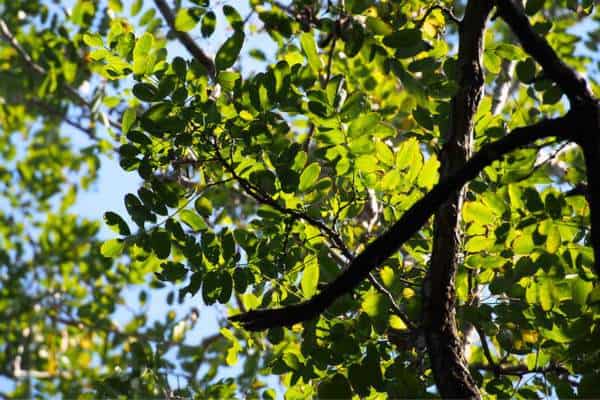
- Scientific name: Robinia pseudoacacia
- Height range: 40-100 feet tall
Black locusts are close relatives of honey locusts, but they lack the robust trunk spines of their cousins. Instead, black locusts’ spines are found at the base of the leaves. It makes it more difficult for herbivores to chomp when every bite contains a prickly thorn.
Other spines are found on young saplings. They keep deer and herbivores away from the soft wood until the adult bark has an opportunity to thicken. You’ll only see black locust trees in southern Ohio.
In the United States, they are native to the Appalachian Mountains and the Ozarks. However, they have the ability to grow in other places; they are very adaptable, fast-growing, and good at controlling erosion. They’re very popular in Europe and the Mediterranean as decorative, shade, and park trees.
3. Cockspur Hawthorn
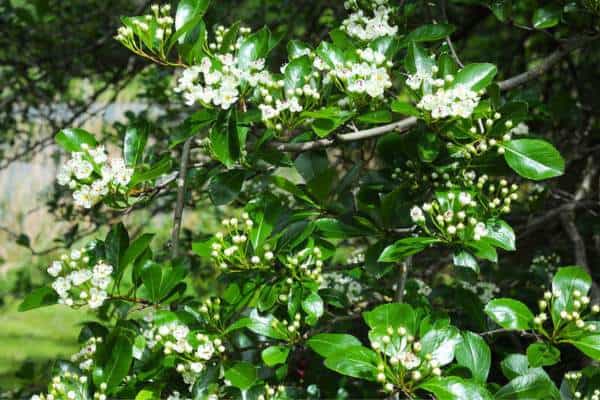
- Scientific name: Crataegus crus-galli
- Height range: 15 to 40 feet tall
Hawthorn trees are some of the most common trees in the state of Ohio. They get their name from the combination of thorny branches and plentiful fruit. Cockspur hawthorns are one species in this large group.
They get their name from the slightly curved shape of each thorn; historical botanists believed the thorn looked like the spur on a rooster’s foot. The tree spends much of its energy growing thorns and fruit; it stays small throughout its life. The fruit is edible for humans. Native Americans made tea with the dried fruit.
Today, hawthorn jelly is popular. Urban planners enjoy the cockspur hawthorn because of its compact size and white flowers. They have bred a thornless variety that’s easier to prune and take care of.
While the tree’s native range is eastern North America, ornamental species have been planted as far away as the United Kingdom.
4. Washington Hawthorn
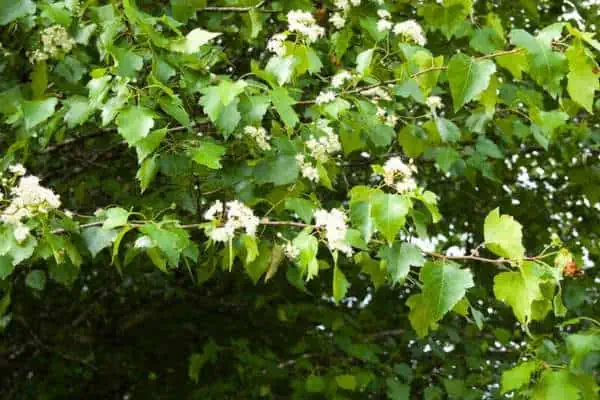
- Scientific name: Crataegus phaenopyrum
- Height range: 15 to 25 feet tall
In the wild, they are one of the rarest types of hawthorn trees in Ohio. Only southwest and eastern Ohio support wild Washington hawthorns. Even so, you’ll probably see them elsewhere since they are popular among urban planners and in suburban areas.
They’re small and compact, so they work well in neighborhoods, along sidewalks, and in parks. Washington hawthorns boast creamy white blooms late in the spring and dark green leaves during the summer. Their fall colors are vibrant; as they shed their leaves, they turn red or auburn.
You probably won’t want to try climbing a Washington hawthorn. Even the smallest twig on this tree has sharp thorns. These thorns don’t contain poison, but they can be several centimeters long. Songbirds don’t mind the spines.
They navigate between the spiky perches and feast on the tree’s bright red berries.
